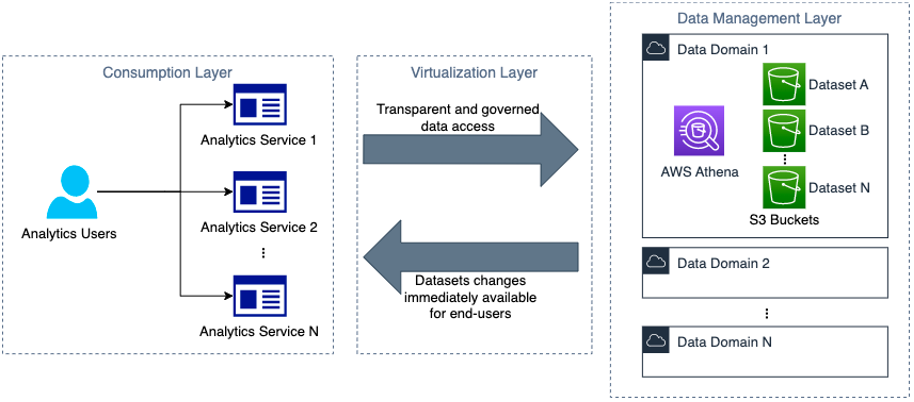AWS Big Data Blog
Category: *Post Types
Compose your ETL jobs for MongoDB Atlas with AWS Glue
In today’s data-driven business environment, organizations face the challenge of efficiently preparing and transforming large amounts of data for analytics and data science purposes. Businesses need to build data warehouses and data lakes based on operational data. This is driven by the need to centralize and integrate data coming from disparate sources. At the same […]
How SOCAR handles large IoT data with Amazon MSK and Amazon ElastiCache for Redis
This is a guest blog post co-written with SangSu Park and JaeHong Ahn from SOCAR. As companies continue to expand their digital footprint, the importance of real-time data processing and analysis cannot be overstated. The ability to quickly measure and draw insights from data is critical in today’s business landscape, where rapid decision-making is key. […]
Build an analytics pipeline for a multi-account support case dashboard
As organizations mature in their cloud journey, they have many accounts (even hundreds) that they need to manage. Imagine having to manage support cases for these accounts without a unified dashboard. Administrators have to access each account either by switching roles or with single sign-on (SSO) in order to view and manage support cases. This […]
Real-time anomaly detection via Random Cut Forest in Amazon Managed Service for Apache Flink
August 30, 2023: Amazon Kinesis Data Analytics has been renamed to Amazon Managed Service for Apache Flink. Read the announcement in the AWS News Blog and learn more. Real-time anomaly detection describes a use case to detect and flag unexpected behavior in streaming data as it occurs. Online machine learning (ML) algorithms are popular for […]
How Novo Nordisk built distributed data governance and control at scale
This is a guest post co-written with Jonatan Selsing and Moses Arthur from Novo Nordisk. This is the second post of a three-part series detailing how Novo Nordisk, a large pharmaceutical enterprise, partnered with AWS Professional Services to build a scalable and secure data and analytics platform. The first post of this series describes the […]
Monitor and optimize cost on AWS Glue for Apache Spark
AWS Glue is a serverless data integration service that makes it simple to discover, prepare, and combine data for analytics, machine learning (ML), and application development. You can use AWS Glue to create, run, and monitor data integration and ETL (extract, transform, and load) pipelines and catalog your assets across multiple data stores. One of […]
Perform upserts in a data lake using Amazon Athena and Apache Iceberg
Amazon Athena supports the MERGE command on Apache Iceberg tables, which allows you to perform inserts, updates, and deletes in your data lake at scale using familiar SQL statements that are compliant with ACID (Atomic, Consistent, Isolated, Durable). Apache Iceberg is an open table format for data lakes that manages large collections of files as […]
Working with percolators in Amazon OpenSearch Service
Amazon OpenSearch Service is a managed service that makes it easy to secure, deploy, and operate OpenSearch and legacy Elasticsearch clusters at scale in the AWS Cloud. Amazon OpenSearch Service provisions all the resources for your cluster, launches it, and automatically detects and replaces failed nodes, reducing the overhead of self-managed infrastructures. The service makes it […]
How the BMW Group analyses semiconductor demand with AWS Glue
This is a guest post co-written by Maik Leuthold and Nick Harmening from BMW Group. The BMW Group is headquartered in Munich, Germany, where the company oversees 149,000 employees and manufactures cars and motorcycles in over 30 production sites across 15 countries. This multinational production strategy follows an even more international and extensive supplier network. Like many automobile companies across the world, the […]
How Huron built an Amazon QuickSight Asset Catalogue with AWS CDK Based Deployment Pipeline
This is a guest blog post co-written with Corey Johnson from Huron. Having an accurate and up-to-date inventory of all technical assets helps an organization ensure it can keep track of all its resources with metadata information such as their assigned owners, last updated date, used by whom, how frequently, and more. It helps engineers, […]









